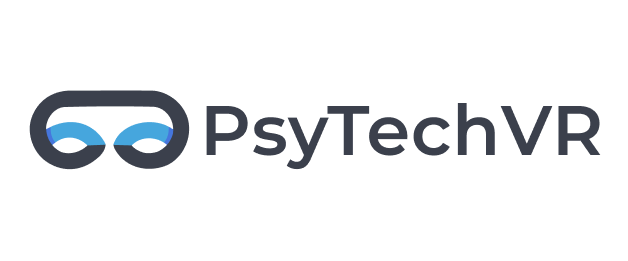Blog - Therapy
What Is Virtual Reality Exposure Therapy?
A Complete VRET Guide
By Dr. Melanie Smith, Advisory board member at PsyTech VR
August 1, 2025
The use of virtual reality (VR) started out in the 1950s as an avenue for users to interact with simulated worlds (environments) as though they were physically present in those environments. At the time, several users would sit in an arcade-styled booth VR machine called the Sensorama, which provided them with a combination of 3D video, stereo sound, vibrations, wind, and even scents to simulate real-world entertaining experiences such as riding a motorcycle through a city or swimming in a large ocean.
Over time as technology began to advance, so did the applications of VR – expanding from entertainment to military training (experimentally), flight simulations, medical training, architectural visitations, virtual prototyping, and many more, all while using the same principle of immersing users in realistic and interactive virtual scenarios.
As of today, this same principle is used to positively transform the world of mental health through Virtual Reality Exposure Therapy (VRET). With VRET, therapists are able to use tailored virtual environments to help walk patients with phobias through gradual exposure in a way that is both safe and very effective.
Going forward in this article, we will be taking an in-depth look into the concept of VRET – reviewing what is about, how it works, the conditions it treats, the science that supports it, and how innovative platforms such as PsyTechVR are making this therapeutic approach more accessible to the individuals that need it.
Over time as technology began to advance, so did the applications of VR – expanding from entertainment to military training (experimentally), flight simulations, medical training, architectural visitations, virtual prototyping, and many more, all while using the same principle of immersing users in realistic and interactive virtual scenarios.
As of today, this same principle is used to positively transform the world of mental health through Virtual Reality Exposure Therapy (VRET). With VRET, therapists are able to use tailored virtual environments to help walk patients with phobias through gradual exposure in a way that is both safe and very effective.
Going forward in this article, we will be taking an in-depth look into the concept of VRET – reviewing what is about, how it works, the conditions it treats, the science that supports it, and how innovative platforms such as PsyTechVR are making this therapeutic approach more accessible to the individuals that need it.
What is Virtual Reality Exposure Therapy (VRET)?
Definition and Overview of VRET
Virtual Reality Exposure Therapy (VRET) can be described as a form of psychological treatment that makes use of VR technology to create immersive virtual environments that help individuals with phobias confront and subsequently manage their fears, anxieties, and trauma-related reactions. You can think of this approach as a much-improved version of traditional exposure therapy which involves the gradual exposure of individuals to real anxiety-provoking stimuli – only this time, the exposure is done in a safe and controlled digital space.
In VRET, the therapist makes use of a headset and specialized software to immerse their patients in virtual scenarios that exactly mirror real-life situations that trigger their specific conditions – whether it is flying in an airplane, speaking in public, or being in a crowded environment. Unlike traditional exposure therapy, the exposures in VRET are gradual, completely controllable, and can be easily repeated, if needed – making it easy for the individual to regain the confidence they need to overcome their fear.
In VRET, the therapist makes use of a headset and specialized software to immerse their patients in virtual scenarios that exactly mirror real-life situations that trigger their specific conditions – whether it is flying in an airplane, speaking in public, or being in a crowded environment. Unlike traditional exposure therapy, the exposures in VRET are gradual, completely controllable, and can be easily repeated, if needed – making it easy for the individual to regain the confidence they need to overcome their fear.

How Virtual Reality Exposure Therapy Works
Essentially, VR exposure therapy effectively combines the principle of classic exposure therapy with immersive virtual environments. The subject individuals are slowly introduced to a 3D digitally-created environment that looks exactly like the scenario they fear or struggle with. This technique, when repeated over time, helps to decrease these individual’s emotional responses as they increasingly get familiar with stimuli that frighten them and learn to control their reactions through practice.
With the aid of VR software and a compatible headset, the therapists start the VRET process by selecting or designing a virtual scenario (using templates) that is accurately tailored to the patient’s specific phobia or traumatic experience (e.g. public speaking or driving). Once the exposure begins, the therapist assumes full control over the simulation and is able to adjust specific elements such as the intensity, e-environmental settings, pacing, and durations in real time. This level of control and adaptability allows for a personalized experience that consistently matches the patient’s comfort level and growth.
Unlike traditional exposure therapy where patients rely on imaginations or real-life setups which may sometimes be hard to repeat, VRET helps to create vivid, life-like, and more importantly, safe environments that effectively trigger emotional responses. This makes this approach more engaging and efficient, especially for individuals who tend to struggle with visualization or those who find real-world exposures too overwhelming at first.
With the aid of VR software and a compatible headset, the therapists start the VRET process by selecting or designing a virtual scenario (using templates) that is accurately tailored to the patient’s specific phobia or traumatic experience (e.g. public speaking or driving). Once the exposure begins, the therapist assumes full control over the simulation and is able to adjust specific elements such as the intensity, e-environmental settings, pacing, and durations in real time. This level of control and adaptability allows for a personalized experience that consistently matches the patient’s comfort level and growth.
Unlike traditional exposure therapy where patients rely on imaginations or real-life setups which may sometimes be hard to repeat, VRET helps to create vivid, life-like, and more importantly, safe environments that effectively trigger emotional responses. This makes this approach more engaging and efficient, especially for individuals who tend to struggle with visualization or those who find real-world exposures too overwhelming at first.
History of Exposure Therapy Using Virtual Reality
The use of VR in exposure therapy can be traced back to the mid-1990s when scientists like Rothbaum began to explore the possibility of virtual reality as an effective tool for anxiety disorder. One of the most notable and significant studies was carried out with patients who had a fear of heights (acrophobia). The patients were digitally immersed in virtual elevation scenarios (e.g. elevator and balcony settings) for about 35 to 45 minutes. After 5 sessions over the course of 3 weeks, the participants were assessed and were observed to exhibit significant reductions in their levels of fear. This positive result helped to reinforce the efficiency of VRET as an effective therapeutic approach.
Over the years, VR technology continued to advance – such that the generated virtual environments which were initially in the form of basic, pixelated simulations have now evolved to fully immersive, high-resolution environments that mimic real-world experiences with an incredible amount of accuracy. There was also a shift from the bulky PC-tethered systems used for immersion to lightweight standalone headsets. With these advancements also came an increase in the applications of VR in mental health. By the early 2000s, therapists were already using VRET to treat several mental conditions ranging from PTSD to fear of flying and public speaking.
As the price of VR equipment dropped and became more affordable, VRET gained widespread adoption and was used for therapeutic purposes, especially in clinical psychology and psychiatry. Today, VR is being used worldwide both for research and practice. VR exposure therapy is solidly backed by a growing body of evidence that supports its effectiveness for phobias, PTSD, social anxiety, and more.
Over the years, VR technology continued to advance – such that the generated virtual environments which were initially in the form of basic, pixelated simulations have now evolved to fully immersive, high-resolution environments that mimic real-world experiences with an incredible amount of accuracy. There was also a shift from the bulky PC-tethered systems used for immersion to lightweight standalone headsets. With these advancements also came an increase in the applications of VR in mental health. By the early 2000s, therapists were already using VRET to treat several mental conditions ranging from PTSD to fear of flying and public speaking.
As the price of VR equipment dropped and became more affordable, VRET gained widespread adoption and was used for therapeutic purposes, especially in clinical psychology and psychiatry. Today, VR is being used worldwide both for research and practice. VR exposure therapy is solidly backed by a growing body of evidence that supports its effectiveness for phobias, PTSD, social anxiety, and more.
Technological Requirements and Setup for VRET
The effectiveness of VRET relies greatly on the tech setup structure which allows the therapist to create a completely controlled, immersive experience that is tailored specifically to each of their patient’s needs. While the entire tech itself does not necessarily need to be complex, it is important that it meets certain standards to guarantee therapeutic effectiveness, comfort, and safety.

VR Headsets
The VR headset can be described as the core of any VRET setup. It could be any model ranging from the high-end tethered systems like the Meta Rift S and HTC Vive to the portable and standalone headsets like the Meta Quest 2 or 3. The choice of headset type completely depends on the therapeutic settings. For example, clinics with more resources might prefer the high-end systems because of their precise tracking and advanced graphics, while smaller practices might opt for the wireless headsets because of their ease of use.
The VR headset can be described as the core of any VRET setup. It could be any model ranging from the high-end tethered systems like the Meta Rift S and HTC Vive to the portable and standalone headsets like the Meta Quest 2 or 3. The choice of headset type completely depends on the therapeutic settings. For example, clinics with more resources might prefer the high-end systems because of their precise tracking and advanced graphics, while smaller practices might opt for the wireless headsets because of their ease of use.
Tracking And Input Devices
To ensure engagement and more importantly, effectiveness, the headsets are mostly combined with motion-tracking sensors and hand controllers. These particular devices help the users to move naturally and interact with elements within the simulations in order to create a realistic sense of presence. Just like they would in the actual world, devices like the hand controller help them feel sensations of activities like opening virtual doors and navigation of actual spaces. The motion-tracking sensors, on the other hand, are used to monitor the user’s head and hand movements in real time.
To ensure engagement and more importantly, effectiveness, the headsets are mostly combined with motion-tracking sensors and hand controllers. These particular devices help the users to move naturally and interact with elements within the simulations in order to create a realistic sense of presence. Just like they would in the actual world, devices like the hand controller help them feel sensations of activities like opening virtual doors and navigation of actual spaces. The motion-tracking sensors, on the other hand, are used to monitor the user’s head and hand movements in real time.
Computer (Processing Unit)
This is specifically for those who opt for PC-tethered VR systems such as the HTC Vive or Valve Index. There is a need for a strong computer to run the VR software smoothly. Here are features you should especially look out for:
This is specifically for those who opt for PC-tethered VR systems such as the HTC Vive or Valve Index. There is a need for a strong computer to run the VR software smoothly. Here are features you should especially look out for:
- A dedicated graphics card (NVIDIA RTX 3060 or higher)
- A multi-processor (at least intel i5/Ryzen 5 or better)
- 16GB or more of RAM
- USB 3.0 ports for headset connectivity and 3.0 USB ports for headset connectivity
Therapeutic Software Platforms
The VR software is regarded as the major component of any VRET setup as it is used to deliver virtual environments. VRET software platforms like PsyTechVR are specifically designed for clinical use and they provide a library of pre-programmed, evidence-based simulations that are tailored to help combat conditions like phobias, anxiety disorder, PTSD, and OCD. Examples of the features these platforms provide include:
The VR software is regarded as the major component of any VRET setup as it is used to deliver virtual environments. VRET software platforms like PsyTechVR are specifically designed for clinical use and they provide a library of pre-programmed, evidence-based simulations that are tailored to help combat conditions like phobias, anxiety disorder, PTSD, and OCD. Examples of the features these platforms provide include:
- Customizable virtual scenarios
- Real time therapist control
- Therapeutic guide (an option of an integrated voice that helps users walk through a session)
- Built-in physiological tracking tools (when compatible)
- Patient progress monitoring and reporting
Audio and Sensory Add-ons
Ensuring full immersion cannot be achieved by captivating visuals alone. This is why quality stereo equipment is essential to help produce sound that matches what is being visualized. There are VRET setups that also incorporate haptic feedback (via controllers or wearables), scent emitters, or even treadmills to further simulate real-world sensations.
Ensuring full immersion cannot be achieved by captivating visuals alone. This is why quality stereo equipment is essential to help produce sound that matches what is being visualized. There are VRET setups that also incorporate haptic feedback (via controllers or wearables), scent emitters, or even treadmills to further simulate real-world sensations.
Therapist Interface and Control Dashboard
In every good VRET setup, the therapist or operator always has access to a control panel (either on a tab or computer) that allows them to make modifications before, during, and after every VR session. These include actions like adjusting the intensity of the scenario, pausing the session, or monitoring the user’s physiological indicators such as their heart rate (if they are paired with biofeedback devices). This level of control allows for efficient graded exposure and ensures the user’s safety throughout the duration of their treatment.
In every good VRET setup, the therapist or operator always has access to a control panel (either on a tab or computer) that allows them to make modifications before, during, and after every VR session. These include actions like adjusting the intensity of the scenario, pausing the session, or monitoring the user’s physiological indicators such as their heart rate (if they are paired with biofeedback devices). This level of control allows for efficient graded exposure and ensures the user’s safety throughout the duration of their treatment.
Biofeedback Devices
This category of devices is optional, but they do help to scale the efficiency of VRET when included in a setup. VRET tech systems can be integrated with wearable biofeedback devices (e.g. heart rate monitors and respiration rate sensors to help therapists make informed decisions during the course of VRET treatment by allowing for real time stress level assessments and tracking of improvement across sessions).
This category of devices is optional, but they do help to scale the efficiency of VRET when included in a setup. VRET tech systems can be integrated with wearable biofeedback devices (e.g. heart rate monitors and respiration rate sensors to help therapists make informed decisions during the course of VRET treatment by allowing for real time stress level assessments and tracking of improvement across sessions).
What to Expect During a VRET Session
The process involved in VR exposure therapy is structured similarly to traditional in-vivo exposure therapy. While the details of each session may vary depending on the condition that is being treated and the VR platform used, most VRET sessions follow the same framework.

Initial Patient Assessment and Preparation
In a typical VRET session, the therapist kicks off the process by conducting a comprehensive biopsychosocial intake evaluation in an effort to understand the patient’s condition(s) including the symptom severity, triggers, and therapy goal. This can be carried out using psychological questionnaires (such as the Fear Questionnaire or the PTSD Checklist), clinical interviews, and sometimes physiological baseline readings such as heart rate.
It is also in this stage that the therapist explains to the patient what the logic behind VRET is and what to expect during the course of treatment. Different concerns about the therapy method are addressed and the therapist assesses the patient’s readiness and willingness to engage in the exposure therapy process. This beginning stage is critical and serves as the foundation for informed consent for exposure and helps to build a trust that lasts throughout the entire therapeutic process.
It is also in this stage that the therapist explains to the patient what the logic behind VRET is and what to expect during the course of treatment. Different concerns about the therapy method are addressed and the therapist assesses the patient’s readiness and willingness to engage in the exposure therapy process. This beginning stage is critical and serves as the foundation for informed consent for exposure and helps to build a trust that lasts throughout the entire therapeutic process.
Customization of Virtual Scenarios Based on Patient Needs
After the patient’s specific fear or trauma has been identified, the therapist then proceeds to select or customize the VR environments that exactly match the patient’s real-life triggers. For instance, a person struggling with enochlophobia (fear of crowds) can be placed in an increasingly crowded virtual scenario, while someone with a fear of heights can be exposed to a VR environment that places the individual on the rooftop of a building or on a balcony. Other factors such as visual intensity, sound, and environment complexity can be adjusted in real time to best match the patient’s readiness and progress.
Session Structure: Gradual Exposure and Therapist Guidance
The VR exposure, when it starts, follows the principle of graded exposure. This means that the therapist starts off by exposing the least fear-inducing virtual scenarios and gradually moves upward to exposing the patient to more distressing ones, as the patient progresses. Throughout this stage, the therapist remains actively involved in the process and is available either in the room or through the control interface – offering verbal support,reinforcing the experiential learning and adjusting settings as needed for optimal outcome.
Monitoring Physiological and Emotional Responses During Sessions
To provide the best therapeutic effect and experience, the therapists, during the exposure sessions, monitor physiological data such as heart rate, skin conductance, or breathing patterns – with the help of integrated biofeedback tools. At the same time, they observe verbal cues (such as statements of fear or coping attempts), body language, and subjective reports of distress, to help them gauge their patient’s progress, identify key triggers, and modify exposure levels when necessary.
Post-Session Review and Ongoing Treatment Adjustments
After the end of each session, the therapist and patient conclude their session by discussing the emotional and physiological reactions that were observed during the exposure. They also review the effectiveness of the coping strategies that were employed during exposure and the progress being made. This debrief session helps to strengthen what has been learned during the session, build confidence, and identify the next steps for subsequent sessions. At the end of the session, if deemed fit, the therapist can make certain changes to the treatment plans – examples of which include adjusting scenarios, introducing cognitive restructuring elements, or the inclusion of homework exercises.
What Are the Benefits of VRET?
The optimization of VR technology for exposure therapy offers several advantages that make this treatment method a progressive leap beyond what has previously been achieved with traditional exposure therapy. Some of these advantages include:
Reduction in Anxiety Symptoms
Clinical research conducted over time has depicted that VRET ultimately results in meaningful reductions in anxiety symptoms. One of the major reasons for this treatment method’s effectiveness is rooted in how the brain processes virtual experiences. The VR environments exposed to patients often trigger activation in the fear-related areas of the brain, and because the brain does not clearly distinguish between virtual and actual threats, - gradual, repeated, and controlled exposures can lead to fear extinction. This refers to habituation, the process where the patient’s negative response to fear diminishes over time – all without the risk and logistics of the traditional in-vivo exposure approach.
Clinical research conducted over time has depicted that VRET ultimately results in meaningful reductions in anxiety symptoms. One of the major reasons for this treatment method’s effectiveness is rooted in how the brain processes virtual experiences. The VR environments exposed to patients often trigger activation in the fear-related areas of the brain, and because the brain does not clearly distinguish between virtual and actual threats, - gradual, repeated, and controlled exposures can lead to fear extinction. This refers to habituation, the process where the patient’s negative response to fear diminishes over time – all without the risk and logistics of the traditional in-vivo exposure approach.
Enhanced Treatment of Anxiety Disorders
One of the perks that sets VRET apart from previous methods of exposure therapy is that it allows for easy repetition and consistent exposure to anxiety-inducing stimuli. The consistent and gradual exposure allows patients to incrementally build coping skills and consequently, reduce the avoidance behaviors that often strengthen their anxiety.
Additionally, the unique ability to pause exposures, replay or make changes to the virtual scenario in real time, makes VR exposure therapy treatment more precise and adaptable than real-world exposure.
One of the perks that sets VRET apart from previous methods of exposure therapy is that it allows for easy repetition and consistent exposure to anxiety-inducing stimuli. The consistent and gradual exposure allows patients to incrementally build coping skills and consequently, reduce the avoidance behaviors that often strengthen their anxiety.
Additionally, the unique ability to pause exposures, replay or make changes to the virtual scenario in real time, makes VR exposure therapy treatment more precise and adaptable than real-world exposure.
Improved Efficacy Compared to Traditional Cognitive Behavioral Therapy
VR exposure therapy, when combined with CBT has been studied to match or even exceed the effectiveness of traditional CBT alone – most especially in the treatment of anxiety-related conditions. The reason for this is that the immersive nature of virtual reality serves to improve emotional engagement which helps to fast-track cognitive restructuring and enhance learning. To corroborate this fact, clinical psychologists attest to patients' appreciation of the level of control they experience VRET sessions.
It has also been found that patients who have struggled with imagination-based or in vivo exposure often respond more positively to the realism and interactivity of VRET.
VR exposure therapy, when combined with CBT has been studied to match or even exceed the effectiveness of traditional CBT alone – most especially in the treatment of anxiety-related conditions. The reason for this is that the immersive nature of virtual reality serves to improve emotional engagement which helps to fast-track cognitive restructuring and enhance learning. To corroborate this fact, clinical psychologists attest to patients' appreciation of the level of control they experience VRET sessions.
It has also been found that patients who have struggled with imagination-based or in vivo exposure often respond more positively to the realism and interactivity of VRET.
Increased Accessibility and Engagement Through Immersive Environments
VRET allows for easy exposure to fear-triggering settings that are tailored to each patient – which in most cases could be expensive, logistically complicated, or simply impossible or unsafe to recreate physically. This convenience helps to remove restrictions to treatment – especially for people who are situated in remote areas or those with mobility issues (e.g. injured war veterans with PTSD).
Aside from this level of accessibility, VRET’s gamified and immersive nature helps to capture patient's attention and increase both their engagement and motivation. This is mostly beneficial to the younger generation (whose attention and focus peaks when faced with a challenge or in a competition), and individuals who are resistant to the traditional therapy settings.
VRET allows for easy exposure to fear-triggering settings that are tailored to each patient – which in most cases could be expensive, logistically complicated, or simply impossible or unsafe to recreate physically. This convenience helps to remove restrictions to treatment – especially for people who are situated in remote areas or those with mobility issues (e.g. injured war veterans with PTSD).
Aside from this level of accessibility, VRET’s gamified and immersive nature helps to capture patient's attention and increase both their engagement and motivation. This is mostly beneficial to the younger generation (whose attention and focus peaks when faced with a challenge or in a competition), and individuals who are resistant to the traditional therapy settings.
Conditions Treated with VRET and Related Therapies
The use of VR exposure therapy (VRET) has evolved beyond niche use and is now applied to support countless individuals struggling across a broad range of mental health conditions. VRET has become adaptable and its virtual scenarios can be tailored to meet the specific needs of any individual – making the treatment method both precise and scalable. In this section, we will be reviewing the major conditions VRET is used to treat and how it's integrated with proven techniques like EMDR to deliver even stronger results.
Specific Phobias
Virtual reality exposure therapy has shown remarkable success in the treatment of specific phobias such as the fear of flying (aviophobia), fear of heights (acrophobia), fear of animals, fear of enclosed space, etc. This category of phobias is typically triggered by specific, visual, or situational stimuli – some of which can only be effectively recreated for therapy, using virtual environments.
VRET combats specific phobias by generating immersive, life-like virtual environments where patients can confront their fears in a gradual and repeatable manner. Again, throughout the exposure session, the therapist has total control over the exposure levels and will only increase the intensity of the triggering VR scenarios as the patient builds confidence and progresses. Over time, consistent exposure to these tailored VR scenarios leads to a desensitization of the patient’s fear response and it helps them to restructure the irrational beliefs that they had tied to their particular phobia.
VRET combats specific phobias by generating immersive, life-like virtual environments where patients can confront their fears in a gradual and repeatable manner. Again, throughout the exposure session, the therapist has total control over the exposure levels and will only increase the intensity of the triggering VR scenarios as the patient builds confidence and progresses. Over time, consistent exposure to these tailored VR scenarios leads to a desensitization of the patient’s fear response and it helps them to restructure the irrational beliefs that they had tied to their particular phobia.
Social Anxiety Disorder and Generalized Anxiety Disorder (GAD)
VRET helps people struggling with social anxiety disorders by generating realistic virtual scenarios of real-life interactions, examples of which include speaking in front of a crowd or engaging in job interviews, while removing the pressure of being in an actual social environment. This way, patients would be able to practice difficult scenarios like public speaking, job interviews, or starting conversations without the fear of real-world judgment or failure.
For individuals with GAD, virtual reality is utilized for practicing mindfulness, relaxation, and exposure to uncertainty-provoking virtual scenarios – all in a bid to train the patient to better regulate their emotions and develop stronger coping mechanisms.
For individuals with GAD, virtual reality is utilized for practicing mindfulness, relaxation, and exposure to uncertainty-provoking virtual scenarios – all in a bid to train the patient to better regulate their emotions and develop stronger coping mechanisms.
Post-Traumatic Stress Disorder (PTSD)
To imagine or physically recreate traumatic experiences for therapy is difficult and in some cases this could be unethical, unsafe or impossible. This is why VRET is regarded as one of the most efficient therapeutic treatments for PTSD. VR exposure therapy helps to allow trauma survivors to revisit their exact distressing memories (by customizing virtual scenarios), in a safe and regulated manner. The therapist can increase the intensity of the exposures as the patients gradually process and reframe their understanding of those traumatic moments.
Clinical studies show that VRET not only reduces PTSD symptoms like flashbacks, hypervigilance, and emotional numbing, but it has also helped in improving emotional regulation and cognitive flexibility.
Clinical studies show that VRET not only reduces PTSD symptoms like flashbacks, hypervigilance, and emotional numbing, but it has also helped in improving emotional regulation and cognitive flexibility.
Obsessive-Compulsive Disorder (OCD) and Intrusive Thoughts
OCD is a condition that is characterized by the prevalence of unwanted and intrusive thoughts that drive individuals to engage in repetitive behaviors (obsessions) or mental acts (compulsions), in an effort to relieve their anxiety. The immersive nature of triggering VR environments makes the VRET session experience emotionally realistic enough to activate the patient’s obsessive fears, while the therapists guide the patients through mindfully observing the discomfort without performing a compulsion. Over a few repeated sessions, patients habituate – as their brain begins to understand through practice that the anxiety they feel when triggered will eventually fade away even without engaging in the typical rituals (compulsive behaviors) that they are used to. For cases where habituation is not possible, VRET can also facilitate change through inhibitory learning, by building the patient’s capacity to not act on unhelpful urges (compulsions) and learn that they can tolerate their distress and do not need to act on their compulsions in order to cope.
Additionally, due to the flexibility provided by VR technology, the generated scenarios can be customized to fit the exact nature of the patient’s obsession – consequently improving the effectiveness of the treatment, especially in cases where the physical exposure is difficult to recreate or too emotionally overwhelming.
Additionally, due to the flexibility provided by VR technology, the generated scenarios can be customized to fit the exact nature of the patient’s obsession – consequently improving the effectiveness of the treatment, especially in cases where the physical exposure is difficult to recreate or too emotionally overwhelming.
Integration of VRET and Eye Movement Desensitization and Reprocessing (EMDR)
There are certain VR platforms that combine Virtual Reality exposure therapy with Eye Movement Desensitization and Reprocessing (EMDR) – which is an evidence-based therapy for trauma treatment. This therapy method helps to treat patients with PTSD and other trauma-related conditions by helping patients process distressing memories through guided eye movements or other forms of bilateral stimulation.
The combination of these 2 treatment methods helps to accelerate emotional processing and improves the therapeutic outcome of the patient. While VRET provides an immersive visual exposure to trauma-related memories, the EMDR helps to engage the brain’s information-processing systems to help the patient reframe painful memories. Essentially VRET, through triggering visuals, functions as a memory activation tool so the EMDR approach can work effectively without requiring that the patient rely solely on imagination or verbal recall. This integration is particularly beneficial for individuals who have difficulty visualizing past events or those who emotionally shut down when asked to revisit trauma using the traditional method.
The combination of these 2 treatment methods helps to accelerate emotional processing and improves the therapeutic outcome of the patient. While VRET provides an immersive visual exposure to trauma-related memories, the EMDR helps to engage the brain’s information-processing systems to help the patient reframe painful memories. Essentially VRET, through triggering visuals, functions as a memory activation tool so the EMDR approach can work effectively without requiring that the patient rely solely on imagination or verbal recall. This integration is particularly beneficial for individuals who have difficulty visualizing past events or those who emotionally shut down when asked to revisit trauma using the traditional method.
Scientific Evidence of VRET Efficiency
As we said earlier in this article, virtual reality exposure therapy is backed by a growing body of clinical research and scientific validation. Over the years, researchers have conducted numerous studies to test the efficacy of VRET across different disorders and the results generally show that VRET is much more than just an alternative to traditional exposure - as its effectiveness is the same and sometimes even superior in certain cases.

Overview of Clinical Trials and Meta-Analyses
There are a plethora of randomized controlled trials and meta-analyses that have confirmed that VRET significantly reduces the symptoms of anxiety, PTSD, specific phobias, and many other mental health conditions. For example, a VR trial was conducted in the year 2000 by Rothbaum et al. to study the effectiveness of VRET for the treatment of the fear of flying. The sample included 49 participants that were randomly assigned into VR exposure, real-world exposure, and wait-list groups. The VRET treatment course consisted of 8 VR exposure sessions and the trial lasted for 6 weeks. After treatment, a posttreatment flight on a commercial airline was done to measure results and it was observed that both VR and real-world exposure groups showed significant improvement. In fact, 93% of participants had maintained their confidence to fly when observed at a 6-month follow-up.
Additionally, a meta-analysis was conducted in 2019 to examine the efficacy of VRET for anxiety. This detailed analysis reviewed 30 randomized controlled trials involving 1057 participants across a wide spectrum of Anxiety Disorders. 14 studies tested VRET for Specific Phobias, 8 studies tested for Social Anxiety Disorder or performance anxiety, 5 tested for PTSD, and 3 for Panic Disorder. It was later found after results comparisons that VRET had a large effect size (g= 0.90) when compared to the waitlist control groups, depicting significant symptom-reduction efficiency. Also when the VRET results were placed on a scale with that of traditional in-vivo exposure, the difference in outcome was statistically insignificant (g= 0.07). The study ultimately concluded that VRET is not only a credible alternative to traditional exposure methods, but it also offers added comfort and feasibility for patients.
Additionally, a meta-analysis was conducted in 2019 to examine the efficacy of VRET for anxiety. This detailed analysis reviewed 30 randomized controlled trials involving 1057 participants across a wide spectrum of Anxiety Disorders. 14 studies tested VRET for Specific Phobias, 8 studies tested for Social Anxiety Disorder or performance anxiety, 5 tested for PTSD, and 3 for Panic Disorder. It was later found after results comparisons that VRET had a large effect size (g= 0.90) when compared to the waitlist control groups, depicting significant symptom-reduction efficiency. Also when the VRET results were placed on a scale with that of traditional in-vivo exposure, the difference in outcome was statistically insignificant (g= 0.07). The study ultimately concluded that VRET is not only a credible alternative to traditional exposure methods, but it also offers added comfort and feasibility for patients.
Comparative Studies: VRET vs Traditional Exposure Therapy
Several comparison studies, as we have discussed, have established that virtual reality exposure therapy (VRET) is just as effective as traditional exposure therapy. However, for some patients, VRET’s ability to allow individuals to confront their fears in a safe virtual environment, makes this therapeutic treatment both accessible and engaging.
Also, unlike traditional exposure therapy which depends on real-world logistics, VRET can replicate and easily repeat difficult triggering scenarios on-demand, without the cost, time, or emotional burden of orchestrating real-world exposures. VRET’s level of environmental control allows for customized exposures, more frequent sessions, and safe first steps for individuals who are prone to exhibiting avoidance behaviors.
Also, unlike traditional exposure therapy which depends on real-world logistics, VRET can replicate and easily repeat difficult triggering scenarios on-demand, without the cost, time, or emotional burden of orchestrating real-world exposures. VRET’s level of environmental control allows for customized exposures, more frequent sessions, and safe first steps for individuals who are prone to exhibiting avoidance behaviors.
Long-term Outcomes and Sustained Benefits
While immediate symptom relief is important, the true test of a psychological treatment is whether or not its effect stands the test of time. VRET over the years has proven to provide lasting therapeutic benefits. Several studies have reflected that the benefits gained through VRET tend to be sustained for months and sometimes even years after the treatment has been concluded.
One major reason for this can be linked to the treatment’s structured, immersive, and most importantly, repeatable nature. Unlike traditional exposure which may vary due to several factors, VR exposure allows for consistent exposure to stimuli. Constant exposure to these stimuli helps patients to internalize coping skills, build new healthier behavioral patterns, and reinforce emotional responses that stick with them beyond the clinical setting.
Furthermore, long-term follow-ups in clinical trials have shown that patients who were treated with VRET typically experience low rates of relapse. For instance, participants in VRET studies like fear of flying or public speaking have been observed to maintain reduced anxiety levels at 6-month and 12-month follow-ups, often without the need for additional therapy sessions.
One major reason for this can be linked to the treatment’s structured, immersive, and most importantly, repeatable nature. Unlike traditional exposure which may vary due to several factors, VR exposure allows for consistent exposure to stimuli. Constant exposure to these stimuli helps patients to internalize coping skills, build new healthier behavioral patterns, and reinforce emotional responses that stick with them beyond the clinical setting.
Furthermore, long-term follow-ups in clinical trials have shown that patients who were treated with VRET typically experience low rates of relapse. For instance, participants in VRET studies like fear of flying or public speaking have been observed to maintain reduced anxiety levels at 6-month and 12-month follow-ups, often without the need for additional therapy sessions.
Patient Satisfaction and Treatment Adherence Rates
Feedback from VRET users often highlight that the treatment approach feels more engaging, safe, and manageable – especially when compared with traditional methods. Most individuals appreciate the sense of control – where they are sure that they can pause, repeat, or stop a scenario at any point in time. This comfort level results in better engagement and an increased willingness to participate in progressively more difficult exposures.
Additionally, the ability of VR exposure therapy to personalize VR scenarios helps to improve the patient’s sense of relevance attached to the treatment method and ultimately its effectiveness.
Additionally, the ability of VR exposure therapy to personalize VR scenarios helps to improve the patient’s sense of relevance attached to the treatment method and ultimately its effectiveness.
What Is the Role of Cognitive Therapy in VRET?
Integration of Cognitive Behavioral Therapy with VRET
The therapeutic effect of VR exposure therapy peaks when it is combined together with Cognitive Behavioral Therapy (CBT) principles. This approach not only allows patients to face their unique fear virtually, but it also allows them to work through the thought patterns and cognitive frameworks that fuel their anxiety – using CBT exercises. Simply put, in this combined approach, the VR experience serves as a behavioral platform where evidence-based CBT exercises such as cognitive restructuring, mindfulness, and guided self-talk, can be effectively practiced in real time.
This integration allows patients to confront their fears in real time while simultaneously learning how to challenge their distorted thoughts and build healthier, more adaptive responses within controlled VR environments.
This integration allows patients to confront their fears in real time while simultaneously learning how to challenge their distorted thoughts and build healthier, more adaptive responses within controlled VR environments.
Benefits of Combining Cognitive Therapy and Exposure Therapy
The combination of VR exposure therapy and CBT principles helps to:
- Address Both Behavior And Thought Patterns: while VRET in itself helps to gradually desensitize patients to their feared stimuli, the practice of CBT exercises works to identify and challenge the underlying thought distortions that drive their fear and avoidance behaviors. This dual effect helps to ensure that both emotional reactivity and irrational beliefs are acted upon to achieve a more robust and lasting change.
- Faster Emotional Processing And Insight: Being immersed in a VR scenario while receiving cognitive prompts helps to make it possible for patients to process emotions in real time. For instance, if the anxiety level of an individual spikes during a VR exposure session, the therapist can, using CBT principles, help reframe the patient’s perception of his/her fear.
- Higher Engagement & Motivation: Virtual reality’s immersive nature effectively captures the attention of individuals and helps to reduce boredom or disengagement during the therapy session. However, when merged with CBT’s structured, and goal-oriented approach, patients tend to participate more actively – which makes them more likely to follow through with their treatment and consistently apply what they have learned in the real world.
- Stronger Sense Of Control: As patients confront their fears in VR and successfully manage their reactions with cognitive tools, they tend to develop a growing sense of mastery and confidence. This increases their emotional resilience and builds a belief in their ability to handle similar situations in the real world.

Effectiveness of Cognitive Behavior Therapy in VRET
Clinical studies have shown that the results achieved when VRET is combined with CBT match and even exceed the outcomes that are realized from the outcome of traditional CBT or exposure therapy alone. For instance, a review published in 2021 concluded that blended VR-CBT interventions show strong efficacy, - especially for phobias and PTSD, by fast-tracking patient readiness and enhancing insights during the sessions.
Furthermore, the presence of a therapist during VRET sessions allows for real time cognitive guidance – which reinforces more adaptive, flexible emotional responding while helping patients reframe distressing thoughts as they encounter challenging VR scenarios.
Furthermore, the presence of a therapist during VRET sessions allows for real time cognitive guidance – which reinforces more adaptive, flexible emotional responding while helping patients reframe distressing thoughts as they encounter challenging VR scenarios.
What Are the Challenges and Limitations of VRET?
While Virtual Reality Exposure Therapy (VRET) is an effective treatment approach, it is important to understand that like any therapeutic tool, VRET has challenges and limitations that can affect both its effectiveness and accessibility.
Potential Drawbacks of Using Virtual Reality
- Cybersickness (VR-Induced Motion Sickness): A lot of users experience symptoms like nausea, dizziness, headaches, and even eye strains when using VR. This effect often occurs as a result of a sensory conflict between what the eyes see and what the physical body actually feels. For individuals dealing with anxiety, this discomfort may disrupt focus or discourage them from following through with their treatment
- Emotional Overload: While the logic behind VRET is the repetition of triggering exposures, overly intense or poorly timed virtual scenarios can result in heightened distress rather than therapeutic progress. Situations where the VR exposure level is too high and they are not adjusted properly on time – might cause patients to shut down, panic, or drop out of therapy altogether. This is why it is so important that clinicians follow the evidence-based principles of exposure-based learning when implementing VRET.
- Potential For Avoidance Of Real-world Exposure: Because VRET only provides virtually generated environments, it is possible that the patients become too comfortable with virtual exposure such that they avoid progressing to real-life situations. In cases where there is no therapist to bridge this gap, the benefits of VRET may not fully result in real-world functioning.
Patient Suitability for VRET
VRET, although an effective therapeutic treatment option, might not be the ideal choice for everyone. Patients with conditions such as severe visual impairments, epilepsy, schizophrenia, or neurocognitive disorders – might not tolerate the VR treatment process well or could be adversely affected by the immersive environments.
Moreover, individuals who struggle with technology or feel uncomfortable with the use of headsets may also resist the treatment. There are also individuals who just prefer traditional face-to-face interactions over digital interfaces, especially in older demographics. This is why pre-patient assessments are crucial in determining the individuals who are best suited for VRET and those who might benefit from alternative therapeutic treatment methods.
Moreover, individuals who struggle with technology or feel uncomfortable with the use of headsets may also resist the treatment. There are also individuals who just prefer traditional face-to-face interactions over digital interfaces, especially in older demographics. This is why pre-patient assessments are crucial in determining the individuals who are best suited for VRET and those who might benefit from alternative therapeutic treatment methods.

Ethical Considerations in Virtual Reality Therapy
The integration of virtual reality (VR) into mental health care brings about a whole new layer of ethical responsibilities that must be adhered to by both therapists and platform developers alike. Some of these responsibilities include:
- Informed Consent: it is important that before treatment commences, the patient must have an adequate understanding of what the therapy involves – including the nature of the fear-triggering virtual scenarios, the potential for emotional discomfort, the logic behind the entire process, and the technological tools used during the sessions. Therapists are required to clearly explain not just the goals, but also the limits and risks associated with VRET, so their patients can make informed choices.
- Emotional Safety: As a result of the fact that VRET involves exposure of patients to triggering stimuli in a vivid and immersive format, it is essential that the therapists are equipped to use CBT strategies to respond to patient anxiety levels in the event of fear spikes. Therapists are obliged to be present during VR exposure sessions to monitor for signs of distress, adjust difficulty levels in real time, and provide grounding techniques and assistance with emotional regulation if the sessions become too overwhelming.
- Data Privacy And Digital Security: Most VRET platforms track their users’ responses, emotional markers, and session recordings. As a result, these platforms run the risk of being breached and the data being misused – especially when the data is not properly encrypted or regulated. Therefore, it is imperative that therapists only use secure platforms that comply with relevant data protection laws like HIPAA or GDPR, for their practice. It is also essential that the therapists are transparent about how their patient data is collected, stored, and shared.
PsyTech VR: Empowering Therapists and Patients with VRET Solutions
PsyTechVR is regarded as one of the major VR platforms at the forefront of making VRET more accessible, adaptable, and clinically effective. The platform’s design was put together with input from psychologists, neuroscientists, and VR engineers in order to provide a medium that allows mental health professionals to deliver immersive, evidence-based VR therapy for the treatment of a broad range of anxiety-related conditions.
One of the major things that sets PsyTechVR apart is its focus on personalization and control. With PsyTechVR, therapists are always presented with different options from an increasing library of virtual environments – ranging from crowded elevators to open skies, speaking stages, war zones, and hospital settings. The platform also allows therapists to easily adjust intensity levels based on a patient’s readiness and progress. This level of flexibility helps to reinforce gradual exposure – which is the core principle behind VRET’s effectiveness.
Additionally, PsyTechVR supports biofeedback integration, which makes it possible for therapists using the platform to track physiological responses like heart rate or skin conductance in real time. These insights help therapists make informed decisions in between sessions, eventually improving the treatment outcome.
Furthermore, PsyTechVR’s security standard complies both with GDPR and HIPAA standards – providing certainty that the patient data recorded in the platform will be handled with the highest level of confidentiality and ethical care. It is also worth mentioning that PsyTechVR’s systems include a cloud-based design that enables therapists to manage VR sessions both physically at the clinic or remotely. This makes it an ideal choice for hybrid therapy models or users who reside in remote locations.
Ultimately, PsyTechVR does not digitize exposure therapy – it redefines how exposure therapy is being delivered by providing a bridge between clinical expertise and cutting-edge technology that empowers both the therapist and the patient.
One of the major things that sets PsyTechVR apart is its focus on personalization and control. With PsyTechVR, therapists are always presented with different options from an increasing library of virtual environments – ranging from crowded elevators to open skies, speaking stages, war zones, and hospital settings. The platform also allows therapists to easily adjust intensity levels based on a patient’s readiness and progress. This level of flexibility helps to reinforce gradual exposure – which is the core principle behind VRET’s effectiveness.
Additionally, PsyTechVR supports biofeedback integration, which makes it possible for therapists using the platform to track physiological responses like heart rate or skin conductance in real time. These insights help therapists make informed decisions in between sessions, eventually improving the treatment outcome.
Furthermore, PsyTechVR’s security standard complies both with GDPR and HIPAA standards – providing certainty that the patient data recorded in the platform will be handled with the highest level of confidentiality and ethical care. It is also worth mentioning that PsyTechVR’s systems include a cloud-based design that enables therapists to manage VR sessions both physically at the clinic or remotely. This makes it an ideal choice for hybrid therapy models or users who reside in remote locations.
Ultimately, PsyTechVR does not digitize exposure therapy – it redefines how exposure therapy is being delivered by providing a bridge between clinical expertise and cutting-edge technology that empowers both the therapist and the patient.
Frequently Asked Questions
How does the brain respond differently to virtual stimuli compared to real-life exposure in therapy?
The brain often reacts to virtual stimuli in the same ways it reacts to real-life experiences. This is because VR activates most of the same neural pathways that are implicated in real-world perceptions, emotions, and memory such as the amygdala which processes fear, and the prefrontal cortex which handles emotional regulation. Due to the strong sense of presence that immersive VR environments typically create, the brain often interprets virtual scenarios as real, triggering authentic emotional and physiological responses. This makes VRET an effective and safe alternative to real-world exposure.
Can VRET be personalized to match unique patient fears or cultural contexts?
Yes. Therapists using VRET customize virtual scenarios to reflect their patient’s specific fears – which may be public speaking, flying, confined spaces, or social interaction. Also, advanced platforms, like PsyTechVR, allow for the adjustments of the intensity, pace, and setting of each experience to match the individual’s emotional threshold and therapy goals.
Additionally, cultural elements like language, social cues, or settings can be integrated into the scenarios, which makes the therapy more relevant and relatable to patients from different backgrounds. This level of customizability improves the effectiveness of VRET and ensures that the patients feel understood and respected throughout the treatment process.
Additionally, cultural elements like language, social cues, or settings can be integrated into the scenarios, which makes the therapy more relevant and relatable to patients from different backgrounds. This level of customizability improves the effectiveness of VRET and ensures that the patients feel understood and respected throughout the treatment process.
Is VRET effective for trauma-related disorders like PTSD beyond specific phobias?
Yes. VRET has on multiple occasions shown strong effectiveness in treating trauma-related disorders like PTSD. It achieves this by recreating trauma-relevant environments in a controlled and gradual way. This allows the patients to confront and slowly build up the confidence they need to overcome distressing memories safely – without being overwhelmed. As of today, VRET is considered a valuable alternative to traditional prolonged exposure therapy, especially when the patients are reluctant to revisit trauma verbally.
What privacy or data security considerations come with using platforms like PsyTech VR?
High-end VR platforms like PsyTechVR are designed to comply with major data protection regulations such as HIPAA (for the U.S.) and GDPR (for Europe). This ensures that sensitive patient data like session recordings, emotional responses, or physiological feedback – are all stored, encrypted, and never shared with anyone without consent.
How can therapists ensure ethical and emotional safety in highly immersive simulations?
Therapists guarantee safety by following structured protocols which include thorough patient assessment, informed consent, and gradual exposure that are tailored to each patient’s readiness level.
During the exposure sessions, the therapist monitors the patient’s emotional and physiological response using real time feedback tools when available. If the distress level becomes overwhelming, the therapist can pause, stop, or adjust the simulation immediately. Other ethical practices of therapists include clear communication, confidentiality, and ongoing support to ensure the VR experience brings about healing and not harm.
During the exposure sessions, the therapist monitors the patient’s emotional and physiological response using real time feedback tools when available. If the distress level becomes overwhelming, the therapist can pause, stop, or adjust the simulation immediately. Other ethical practices of therapists include clear communication, confidentiality, and ongoing support to ensure the VR experience brings about healing and not harm.
PsyTechVR: made by professionals,
for professionals
These psychotherapists and psychologists define the development of our product and methodology since 2020
- Dr. Albert "Skip" Rizzo
Leading expert in VR Therapy with 30+ years' experience.
VR scientist (ResearchGate)
Clinical psychologist. With 30+ years in VR research, Dr. Rizzo has developed groundbreaking VR tools for treating PTSD, TBI, autism - Dr. Udi OrenClinical psychologist and senior medical psychologist, PhDPast President at EMDR-EUROPE, Chief instructor of the EMDR method in Israel (Senior Trainer), President of Israel EMDR Association
- Dr. Gwilym RoddickPsychotherapist (DSW, LCSW), Founder of CBT of Central and South FloridaCBT/ERP/ACT expert, OCD Central and South Florida Board Member, ABCT committee member, Florida and New York based
- Dr. Lynn PanattoniClinical psychologist specializing in integrative and functional medicine, PhDLicensed clinical psychologist specializing in trauma, anxiety, and integrative mental health. Expert in CBT, mindfulness & lifestyle medicine
- Dr. Elizabeth McMahon
Clinical Psychologist since 1980, author of Virtual Reality Therapy for Anxiety" book
In memory of Dr. Elizabeth McMahon (1950-2024), whose vision and contributions continue to guide our mission - Dr. Gianni SerraClinical Psychologist and Psychotherapist, Certified Neuroscience specialistEvangelist of VR exposure therapy in Italy and member of the Italian Society of Cognitive Behavioral Psychotherapy
- Dr. Richard LambProfessor of Educational Psychology, Neurocognition Science Lab, University of GeorgiaPhD in science education and educational measurement. Dr. Lamb leverages neuroscience and VR to enhance STEM education
PsyTechVR:
by professionals,
for professionals
by professionals,
for professionals
These psychotherapists & psychologists define the roadmap and r&d of our company since 2020
Clinical Psychologist, Psychotherapist (CBT), Certified Neuroscience specialist
Dr. Gianni Serra
Evangelist of VR exposure therapy in Italy and member of the Italian Society of Cognitive Behavioral Psychotherapy
Dr. Albert "Skip" Rizzo
Clinical psychologist. With 30+ years in VR research, Dr. Rizzo has developed groundbreaking VR tools for treating PTSD, TBI, autism
Dr. Elizabeth McMahon
In memory of Dr. Elizabeth McMahon (1950-2024), whose vision and contributions continue to guide our mission
Clinical psychologist specializing in integrative and functional medicine, PhD
Dr. Lynn Panattoni
Licensed clinical psychologist specializing in PTSD, anxiety, and integrative mental health. Expert in CBT, mindfulness & lifestyle medicine
Psychotherapist (DSW, LCSW), Founder of CBT of Central and South Florida
Dr. Gwilym Roddick
CBT/ERP/ACT expert, OCD Central and South Florida Board Member, ABCT committee member, Florida and New York based
Clinical psychologist and senior medical psychologist, PhD
Dr. Udi Oren
Past President at EMDR-EUROPE, Chief instructor of the EMDR method in Israel, Chairman of Israel EMDR Association


Complete VR Package for $1599 *
Buying options
PsyTechVR Bundle
Your VR headset
Book a DEMO to get a 15-day FREE TRIAL, then use your own VR device or order a Meta Quest separately
15-day Free Trial, then $120/month
Includes the latest Meta Quest 3s, 12-month access, regular updates, support, training, and marketing materials
* Limited time offer until product is in stock
VR Bundle
Special offer: 35% off Storewide
$
1,599
$
2,499
- Latest Meta Quest 3s (128GB) VR Headset with the installed VR app
- 12-Month Access to PsyTechVR Platforms
- Generative-AI to create exposure scenarios
- Dedicated Support Manager
- Comprehensive 4-Hour Training & Certificate
- Exclusive Marketing Materials for your website and social media
*VR headset will belong to you with full access to the VR app store
Thanks for reading!
Dr. Melanie Smith
Advisory board member at PsyTechVR
Dr. Melanie Smith is a Certified Eating Disorders Specialist and Approved Consultant (CEDS-C) and is a Certified Therapist & Trainer of the Unified Protocol for the Transdiagnostic Treatment of Emotional Disorders (UP). Dr. Smith has been already working intensively in the area of helping patients with eating disorders for over 16 years and has proven her expertise working at the Renfrew Center - the nation's pioneer in the treatment of eating disorders since 1985. Dr. Smith's therapy focus includes ARFID (Avoidant Restrictive Food Intake Disorder), and various forms of related specific phobias which include emetophobia (specific phobia of vomiting), health-related anxiety, and coping with chronic illness, and Post-traumatic stress disorder (PTSD).
Virtual Reality Exposure Therapy (VRET) is another special treatment interest and has played a role in Dr. Smith's professional career over the last few years. Dr. Melanie Smith, together with Dr. Gwilym Roddick, is actively involved in the research and development of OCD and PTSD-related virtual exposure programs, forming the advisory board of PsyTechVR. Dr. Smith plays an active role in the research component of psychological VR product development but also develops training courses for future VR therapists integrating her vast experience of clinical supervision and clinical training gained over the the past decades.
Dr. Smith is passionate about the implementation of evidence-based treatments, clinical supervision, and clinical training and has presented numerous lectures, Continuing Education (CE) workshops, and keynote presentations at academic and professional conferences in the US and overseas. Dr. Melanie Smith has published publications in peer-reviewed journals and is the co-author of the peer-reviewed treatment manual and patient workbook, The Renfrew Unified Treatment Model for Eating Disorders and Comorbidity published by Oxford University Press.
Virtual Reality Exposure Therapy (VRET) is another special treatment interest and has played a role in Dr. Smith's professional career over the last few years. Dr. Melanie Smith, together with Dr. Gwilym Roddick, is actively involved in the research and development of OCD and PTSD-related virtual exposure programs, forming the advisory board of PsyTechVR. Dr. Smith plays an active role in the research component of psychological VR product development but also develops training courses for future VR therapists integrating her vast experience of clinical supervision and clinical training gained over the the past decades.
Dr. Smith is passionate about the implementation of evidence-based treatments, clinical supervision, and clinical training and has presented numerous lectures, Continuing Education (CE) workshops, and keynote presentations at academic and professional conferences in the US and overseas. Dr. Melanie Smith has published publications in peer-reviewed journals and is the co-author of the peer-reviewed treatment manual and patient workbook, The Renfrew Unified Treatment Model for Eating Disorders and Comorbidity published by Oxford University Press.
Dr. Melanie Smith is a therapist specializing in Cognitive Behavioral Therapy and related evidence-based treatments, she claims a Master’s degree in Counseling Psychology and a Ph.D. in Counselor Education & Supervision (Capella University)

Read more about PsyTech VR
We publish articles on phobias, mental health, upcoming events, and special offers
| | Get in touch We're ready to lead you into the future of mental health Sending this information you agree to share your personal information according and limited by our confidentiality statement. |
Safe and secure

Welcome!
We're excited to offer you the chance to experience the power of PsyTech VR with a FREE Trial!




 PsyTechVR
PsyTechVR






